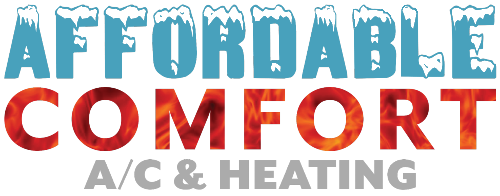Sleeping in Cooler Temperatures
Thermostat wars. Blanket hogging. On the most basic level, a person will fight for a more comfortable temperature, even when they’re sleeping and not 100% conscious of what they’re doing. Because an HVAC system is so central to home comfort, a change in weather means a difference in HVAC usage. Today we’re going to talk about ideal sleeping temperatures since there is no better time to enjoy comfort and save money than while sleeping.
COOLER IS BETTER--USUALLY
According to the national sleep foundation, Sleep.Org, the optimal temperature for high-quality sleep is between 60 and 67 degrees. For babies and toddlers, it’s slightly higher. For those of us who live in a warm climate, those temperatures seem shockingly low, but if we trust their studies for our discussion, it will help us determine some possible courses of action.
While sleeping to cool weather, it’s worthwhile to pay attention to what happens for structuring thermostat usage. Consider this: it can be cold in the room, but the sleeper climbs in bed, snuggles into the blankets, and falls asleep. Eight hours later, the sleeper rises having no memory of the temperature of the massive chunk of sleep time.
LOWER COST
The reason this is an essential component of the story is that when a furnace is just a few degrees higher (or lower), it can have an impact on the electric or gas bill. Regardless of the temperature, if it isn’t snowing in the room, the correctly blanketed sleeper is blissfully unaware of the thermostat setting.
If the sleeper awakes during the night and gets up, a lower temperature can be a bit chilly. As a result, much cooler night and sleeping temperatures aren’t ideal for those who need to get up in the night.
BETTER QUALITY SLEEP
Sleep.Org research suggests sleeping in cold temperatures increases REM, and therefore the quality of sleep. The value of sleeping outside in cold weather has been touted in the Nordic countries and still is today. While young parents claim children are healthier as the result of outdoor sleeping, the most significant difference is that they sleep longer in the cold, and one would assume, more peacefully. It’s essential, they say, that the child is warm.
Bundle your baby in cold weather.
What we can surmise from this attitude is that a person will sleep better in the cold with warm clothing and blankets. Sleep.Org recommends sleeping in cold conditions, and taking a hot water bottle or wearing warm socks to bed if the temperature seems too cold. (One lady we know heats her sheets for a few seconds with a handheld hair dryer to take the chill off before she climbs into bed.)
COVERS
Appropriate bedding may mean a big difference in the quality of sleep. If a person is a ‘covers hog,’ the person sharing the bed may want to make sure their side of the blanket is tucked into the mattress before bed, thereby immobilizing the edge and assuring they get to keep their portion of the covers.
BE COOL AND SMART, TOO
If a homeowner has a Smart thermostat, it’s easy to drop the temperature in the home when it’s time for bed. The chill may even offer an incentive for those who are nocturnal to head for the warm blankets.
At the same time, the Smart thermostat can be programmed to raise the temperature in the home before it’s time for the family to rise in the mornings, to help resist the ‘few more minutes’ of warm blankets because it’s a little too chilly for sleepers to want to get out of bed.
When you need AC repair and maintenance, AC installation, and ductless AC services for your residential or commercial property in the Phoenix, AZ Metro area, Call Affordable Comfort A/C and Heating at 602-574-1205. Our company is licensed, bonded, and insured.


